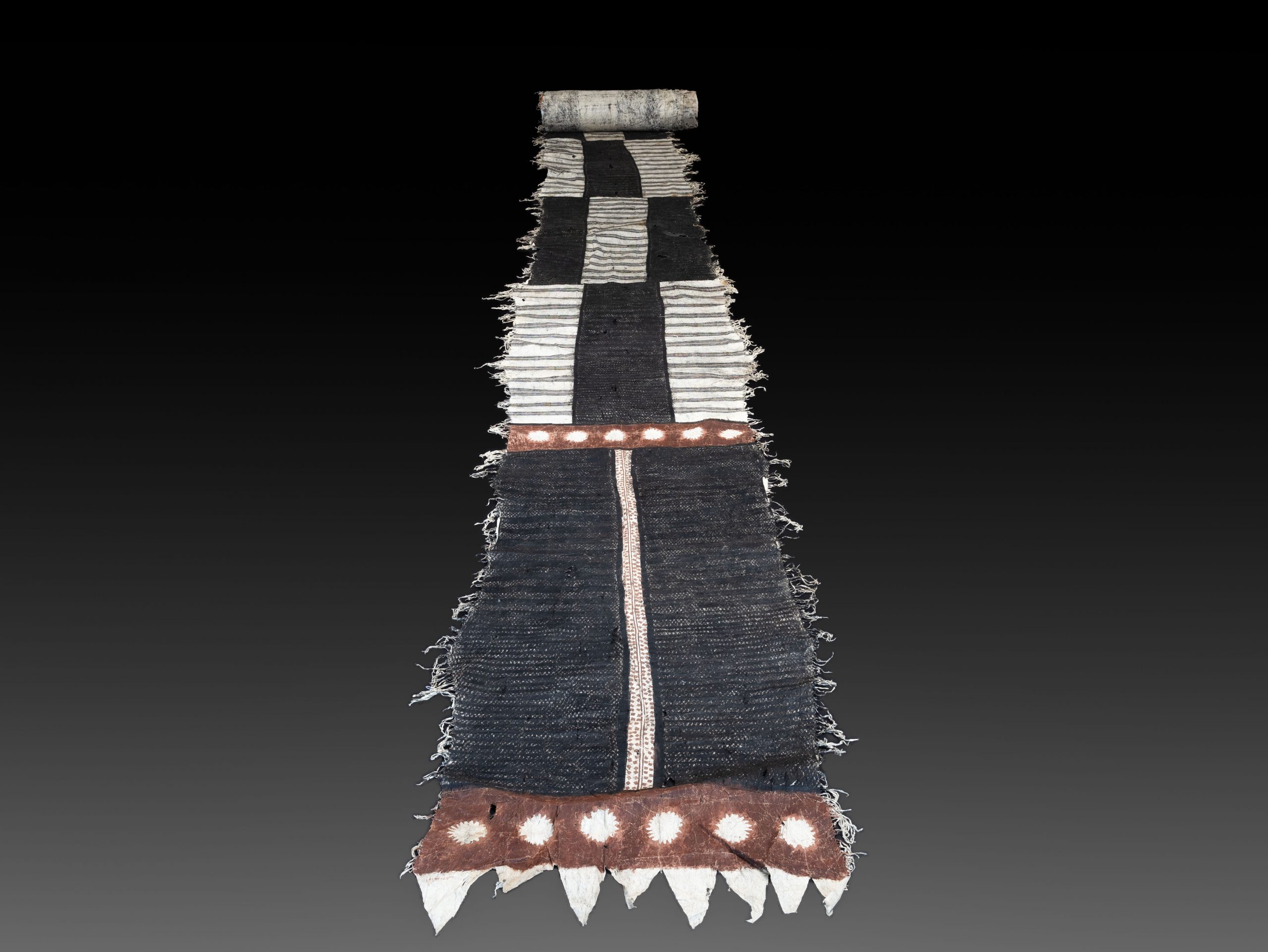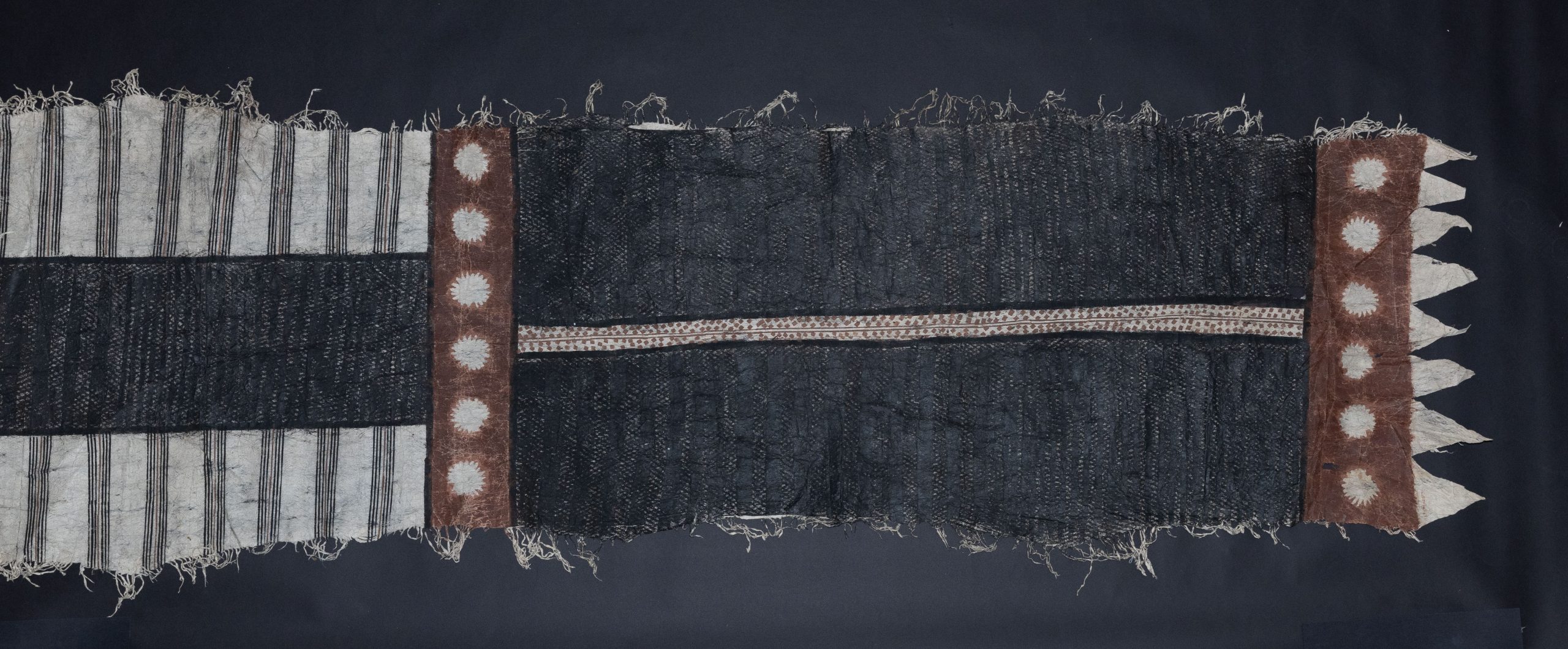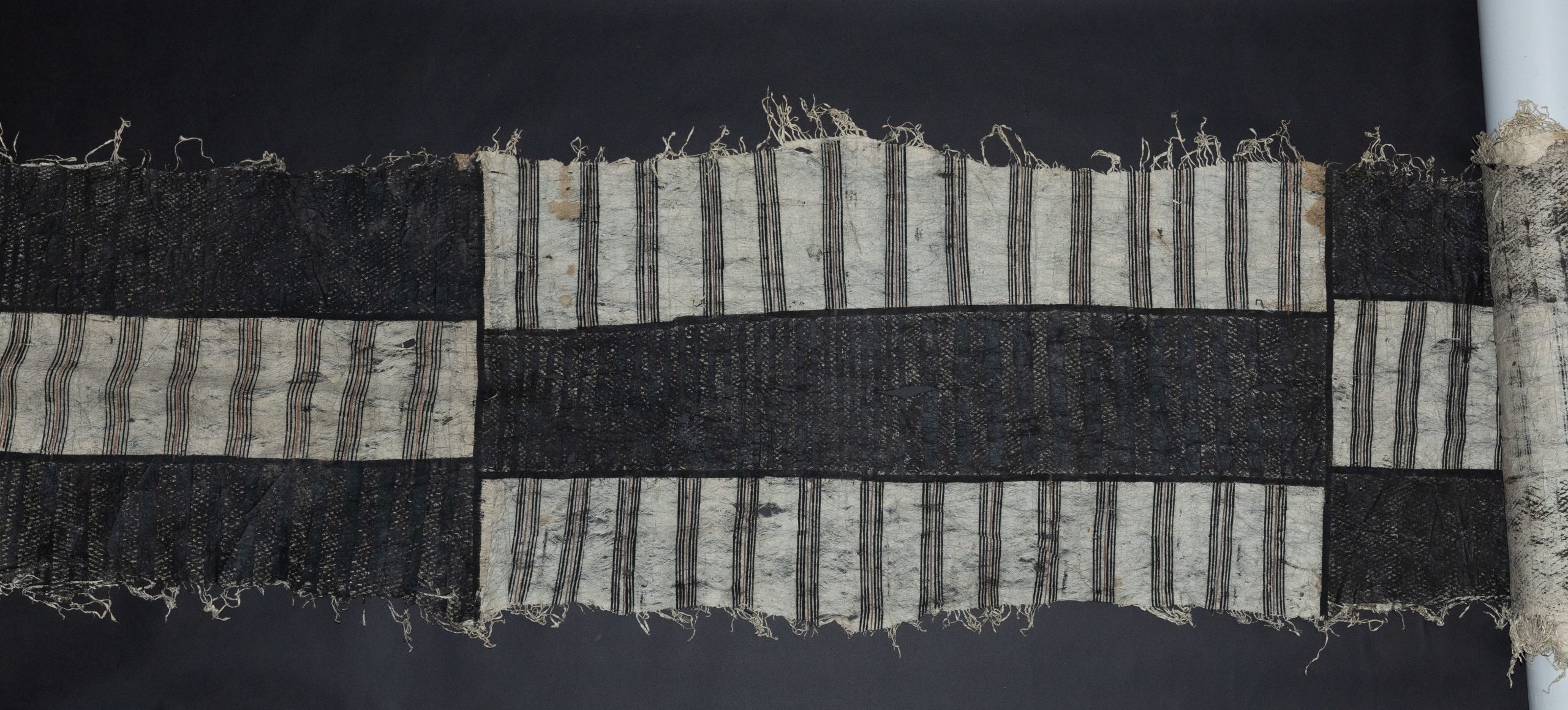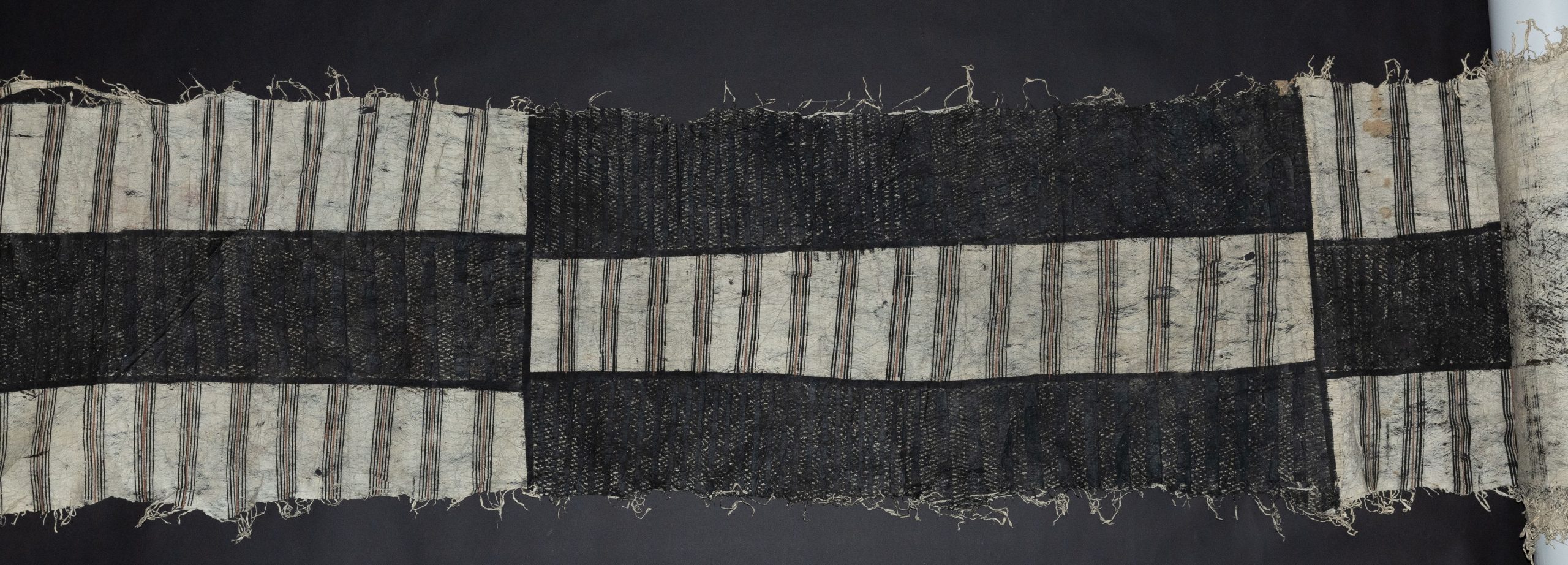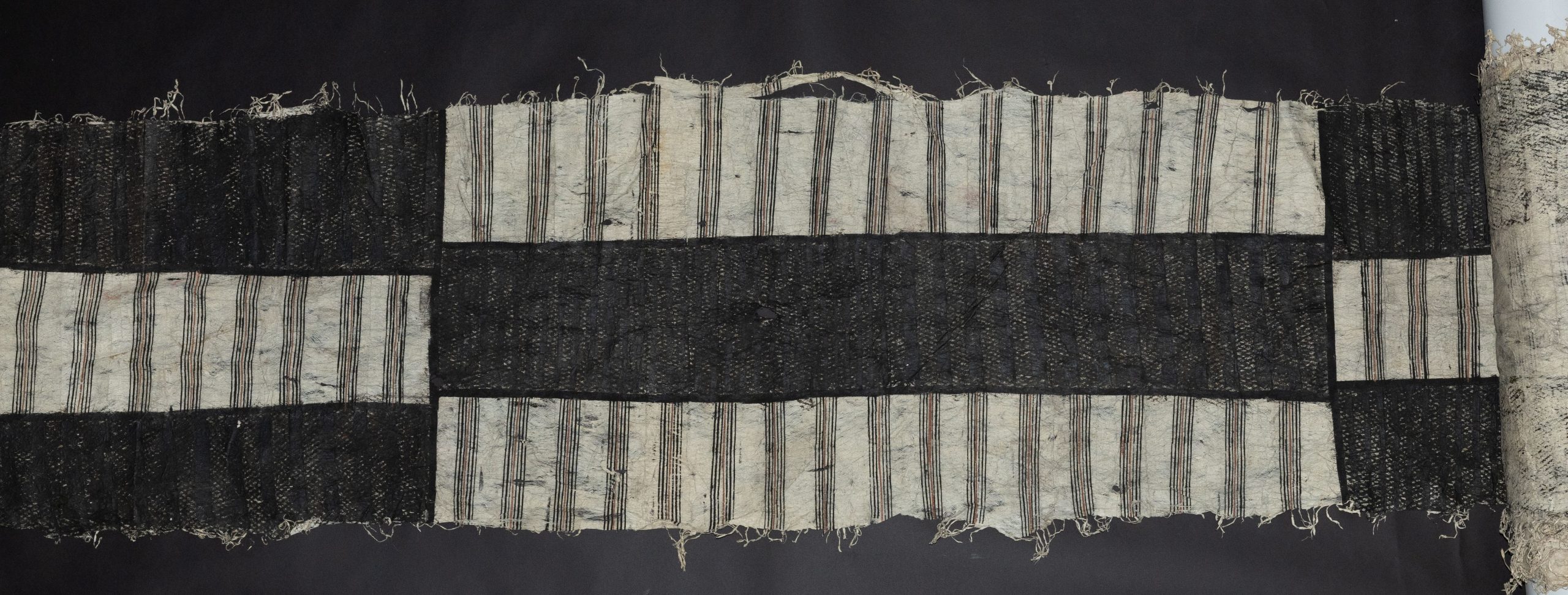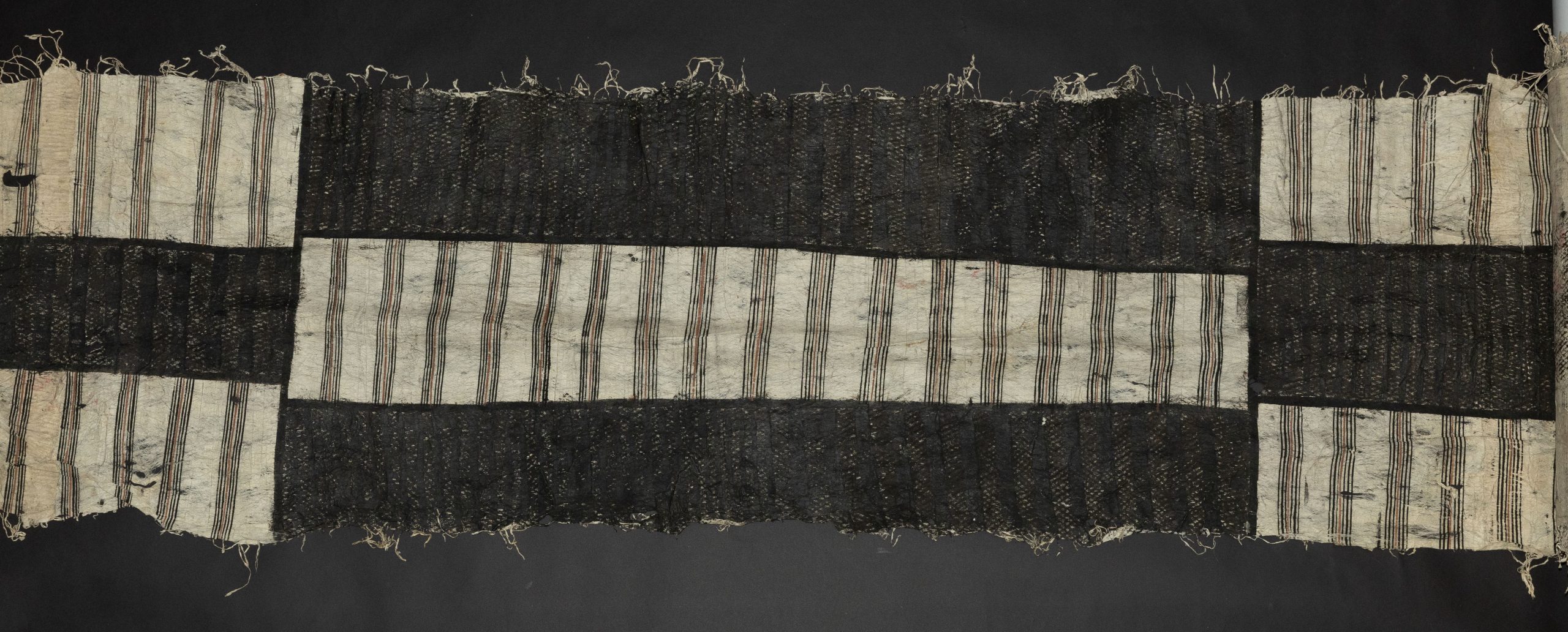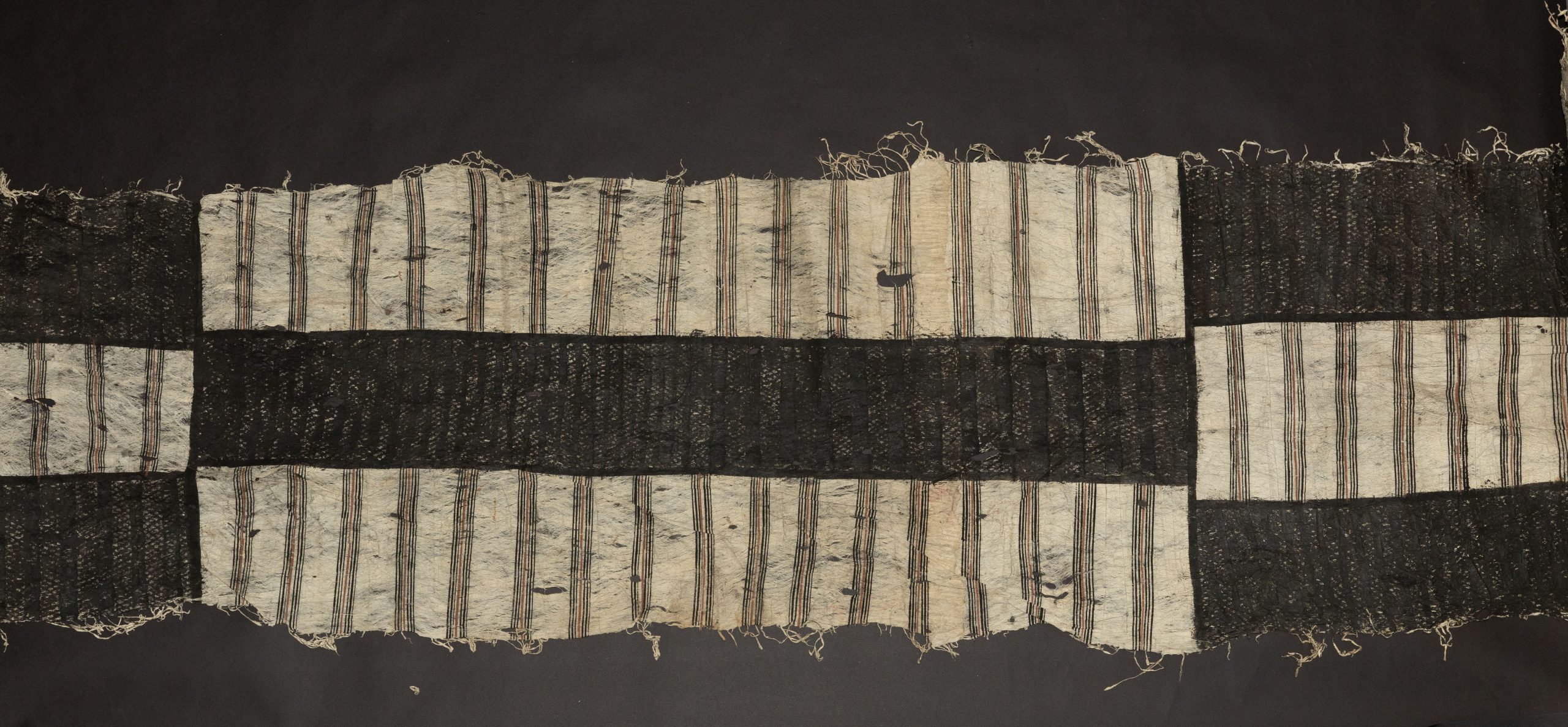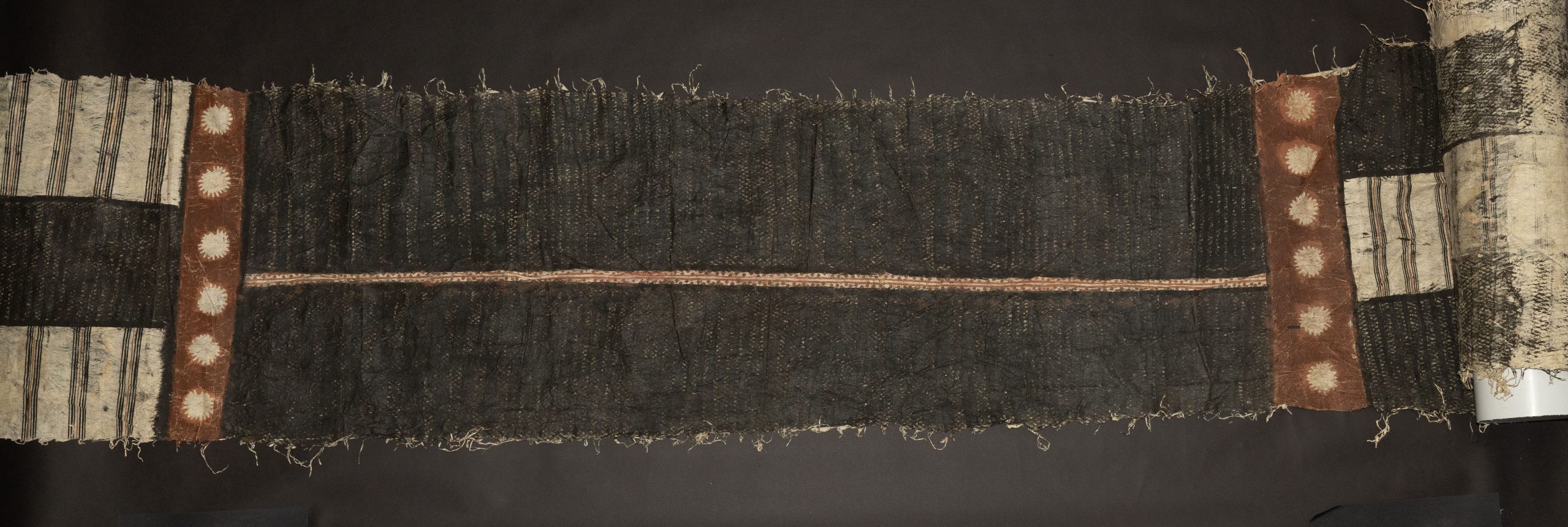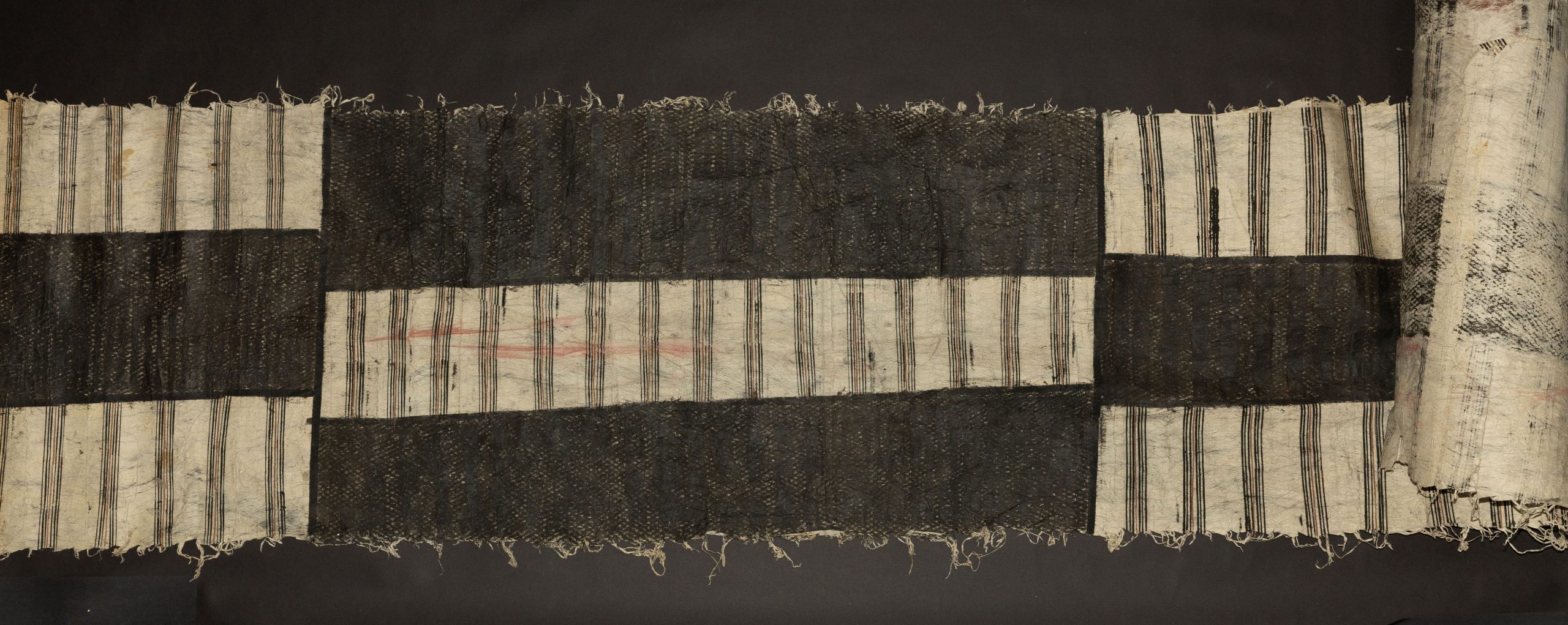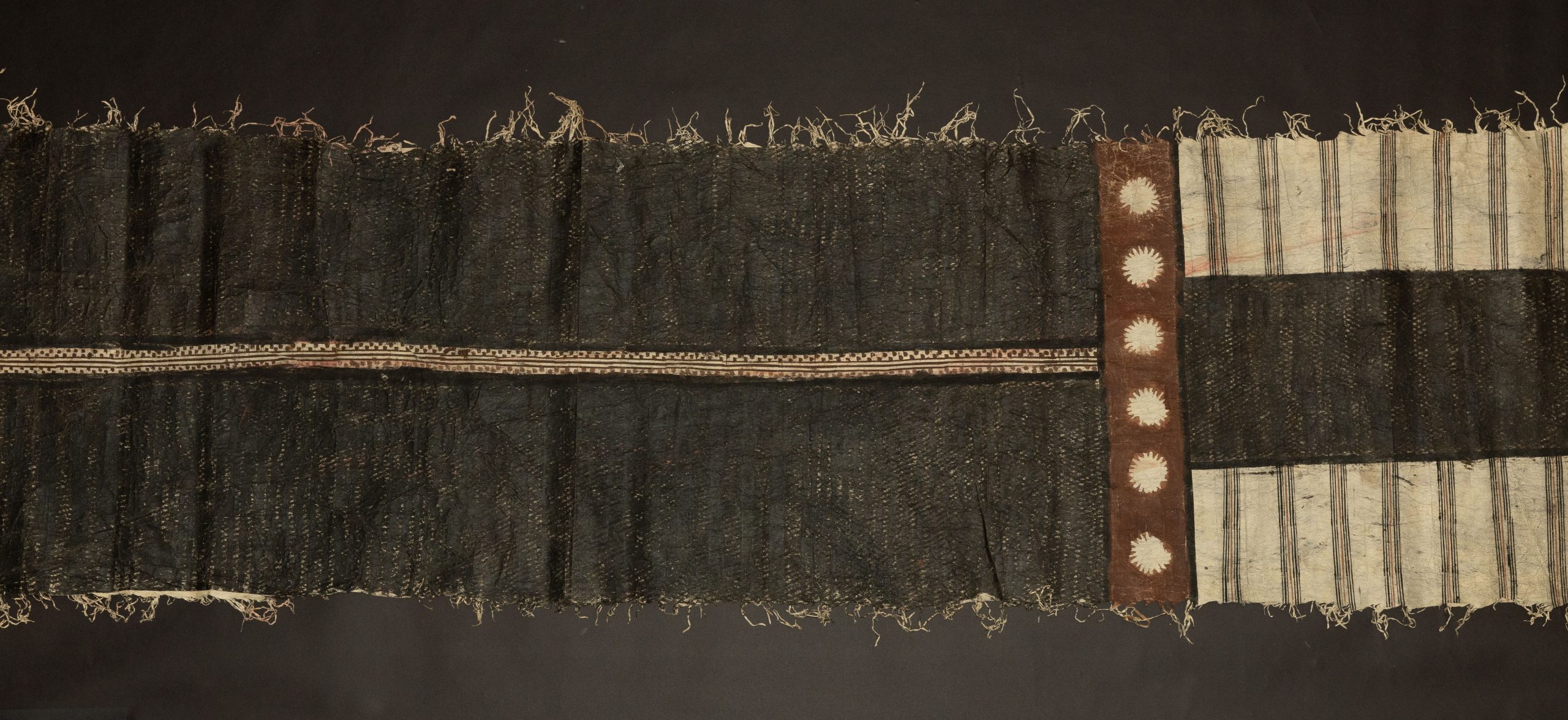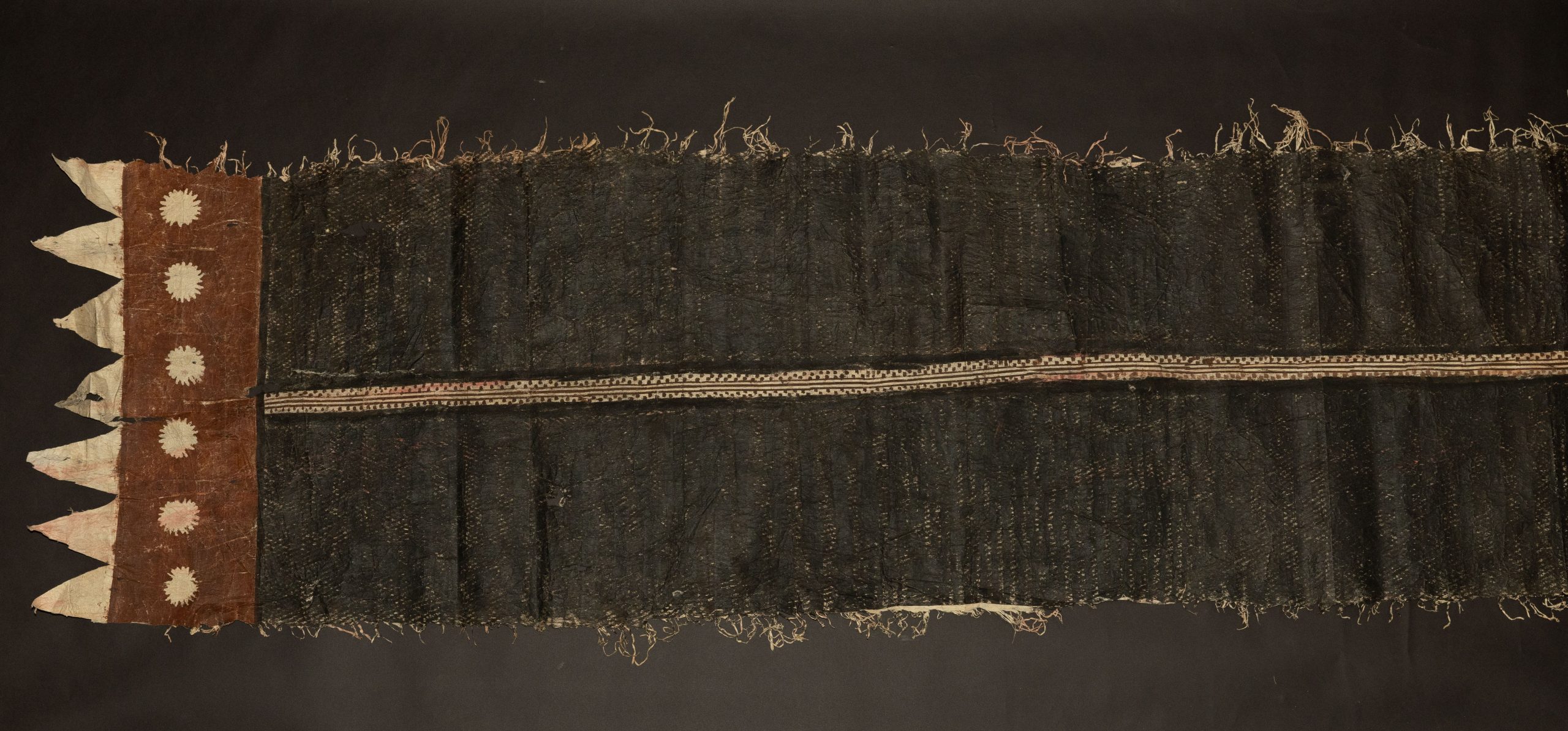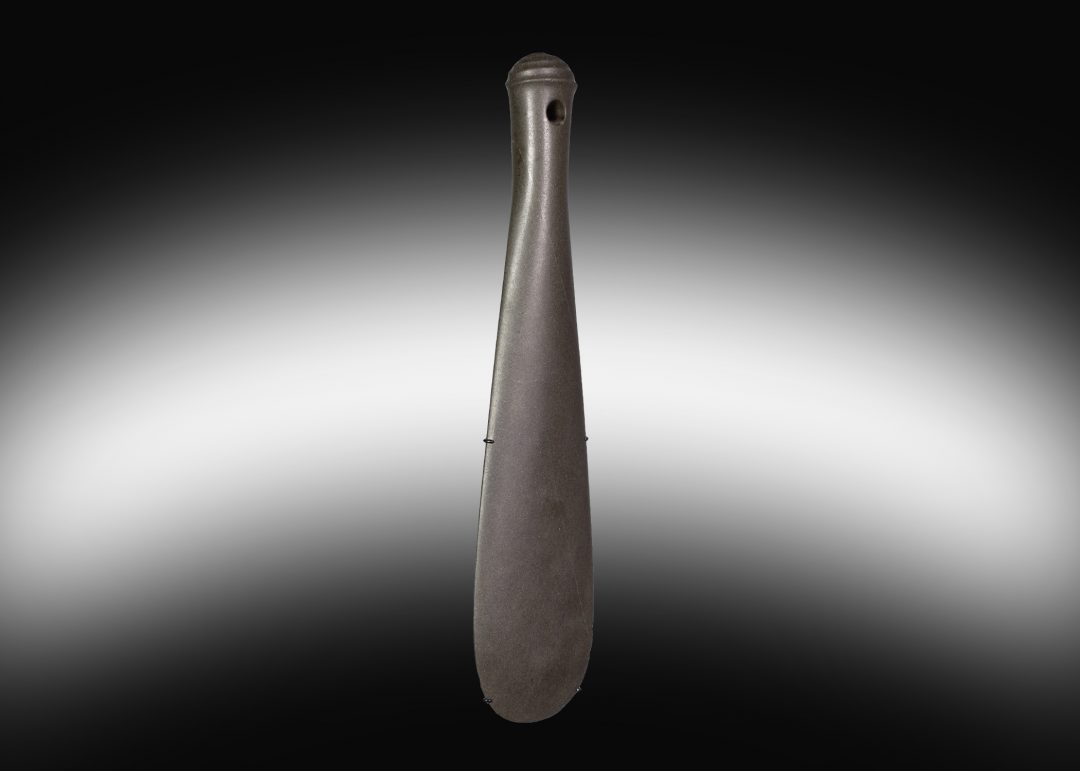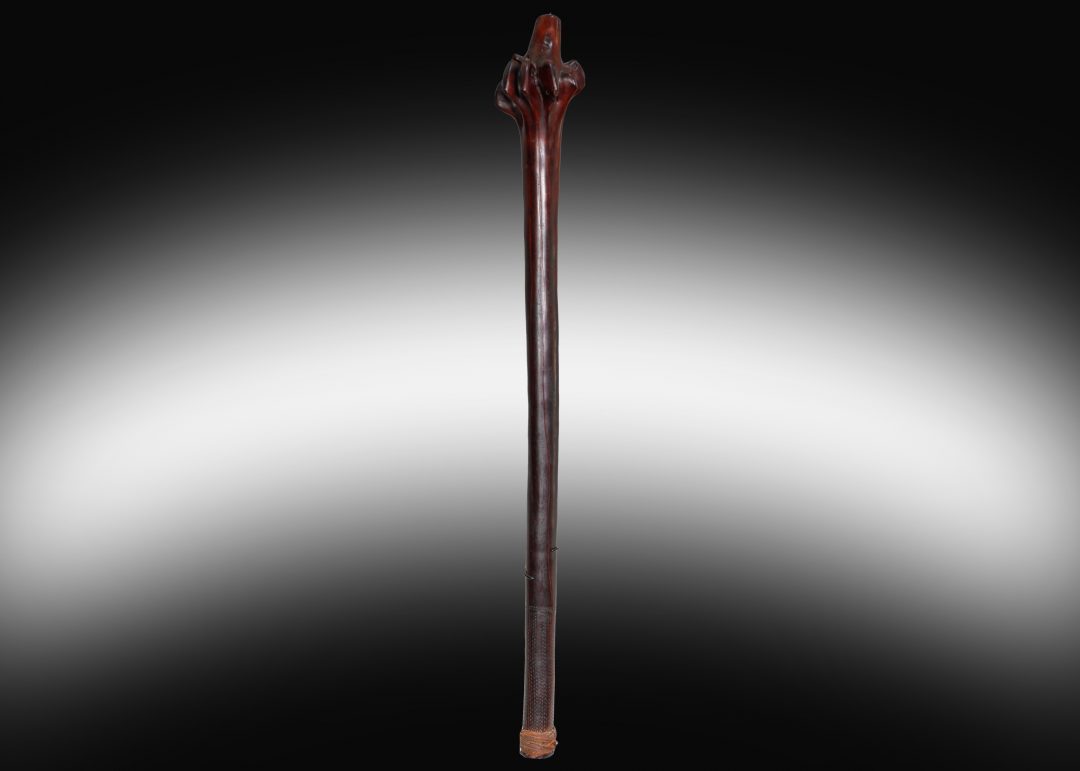19th Century Fijian tapa ( masi ) 17m long
-
TitleLarge 19th Century Fijian Tapa
-
LocationFiji
-
Date19th Century
-
PriceP.O.A
Fijian tapa cloth, known as masi or malo, was made from the paper mulberry ( Broussentia papyrifera ) It was made by women but used extensively by men. The masi was not merely functional,it had symbolic and spiritual significance, prominent in rituals and presentation ceremonies. The very fine sheets of masi like this example were reserved for priests and chiefs. This style of tapa was painted by hand rather than by stencil. Often the designs identified the locality of manufacture and the relationship or allegiance to the owner. Masi had a range of uses as described in, ” Yalo i Viti, A Fiji Museum catalogue” by Fergus Clunie 1986
” Masi formed the basis for the malo loincloth which the youth donned during initiation rituals, and in which men were reinvested at re naming ceremonies following killings; the streamers adorning weapons and person in dance, war and festivity; the sashes, waistbands , trains and turbans of chiefs: the taunamu mosquito screen; the curtain concealing the mediums of Fijian society. It also wrapped the cord with which a man’s widow was strangled for burial with him, that their ghosts might follow and care for him in the afterlife. Its significance was perhaps best suggested in ceremonies forging or cementing bonds between different clans or tribes, in which the chiefs of one party, swathed in vast quantities of masi made by their women, danced before casting it before their counterparts who accepted it, and clad their followers in it”
Masi were also used as war banners and canoe pennants. I am unsure of what function this masi had. The traditional malo or men’s tapa loin cloth were usually 3-6 metres long. For important men and on ritual occasions the malo could be up to 30m long. So it may well be an important masi.
The example on this website has similar characteristics to the example in the Tasmanian Museum. Rod Ewins, in his publication, Fijian Artefacts, Tasmanian Museum and Art Gallery Collection,” 1982, wrote that the Museum’s piece, “Despite lack of provenance, this piece definitely comes from the Highlands of Viti Levu. It consists of diagonally alternating large black and white rectangles. The black rectangles show, on holding against the light, unmistakable evidence of having been inked by rubbing over one or more carved bamboo rollers. The piece closely resembles a piece in the Pitt Rivers Museum and also a piece in the Peabody Museum, Salem, Mass, collected by the Wilkes Expedition in 1838-42. ”
A very similar 5.2m section of tapa sold in, CHRISTIE’S, PARIS – DEC 13, 2011, Art Océanien : Objets de curiosité provenant de la Collection Daniel Blau, Lot Fijian tapa LOT 33
The example on offer here is complete at approximately 17m long x 0.55m wide
Provenance ex Jim Davidson Collection
Private Collection of Malcolm Davidson
Fijian tapa cloth, known as masi or malo, was made from the paper mulberry ( Broussentia papyrifera ) It was made by women but used extensively by men. The masi was not merely functional,it had symbolic and spiritual significance, prominent in rituals and presentation ceremonies. The very fine sheets of masi like this example were reserved for priests and chiefs. This style of tapa was painted by hand rather than by stencil. Often the designs identified the locality of manufacture and the relationship or allegiance to the owner. Masi had a range of uses as described in, ” Yalo i Viti, A Fiji Museum catalogue” by Fergus Clunie 1986
” Masi formed the basis for the malo loincloth which the youth donned during initiation rituals, and in which men were reinvested at re naming ceremonies following killings; the streamers adorning weapons and person in dance, war and festivity; the sashes, waistbands , trains and turbans of chiefs: the taunamu mosquito screen; the curtain concealing the mediums of Fijian society. It also wrapped the cord with which a man’s widow was strangled for burial with him, that their ghosts might follow and care for him in the afterlife. Its significance was perhaps best suggested in ceremonies forging or cementing bonds between different clans or tribes, in which the chiefs of one party, swathed in vast quantities of masi made by their women, danced before casting it before their counterparts who accepted it, and clad their followers in it”
Masi were also used as war banners and canoe pennants. I am unsure of what function this masi had. The traditional malo or men’s tapa loin cloth were usually 3-6 metres long. For important men and on ritual occasions the malo could be up to 30m long. So it may well be an important masi.
The example on this website has similar characteristics to the example in the Tasmanian Museum. Rod Ewins, in his publication, Fijian Artefacts, Tasmanian Museum and Art Gallery Collection,” 1982, wrote that the Museum’s piece, “Despite lack of provenance, this piece definitely comes from the Highlands of Viti Levu. It consists of diagonally alternating large black and white rectangles. The black rectangles show, on holding against the light, unmistakable evidence of having been inked by rubbing over one or more carved bamboo rollers. The piece closely resembles a piece in the Pitt Rivers Museum and also a piece in the Peabody Museum, Salem, Mass, collected by the Wilkes Expedition in 1838-42. ”
A very similar 5.2m section of tapa sold in, CHRISTIE’S, PARIS – DEC 13, 2011, Art Océanien : Objets de curiosité provenant de la Collection Daniel Blau, Lot Fijian tapa LOT 33
The example on offer here is complete at approximately 17m long x 0.55m wide
Provenance ex Jim Davidson Collection
Private Collection of Malcolm Davidson
Large early 19th century Fijian tapa or masi
